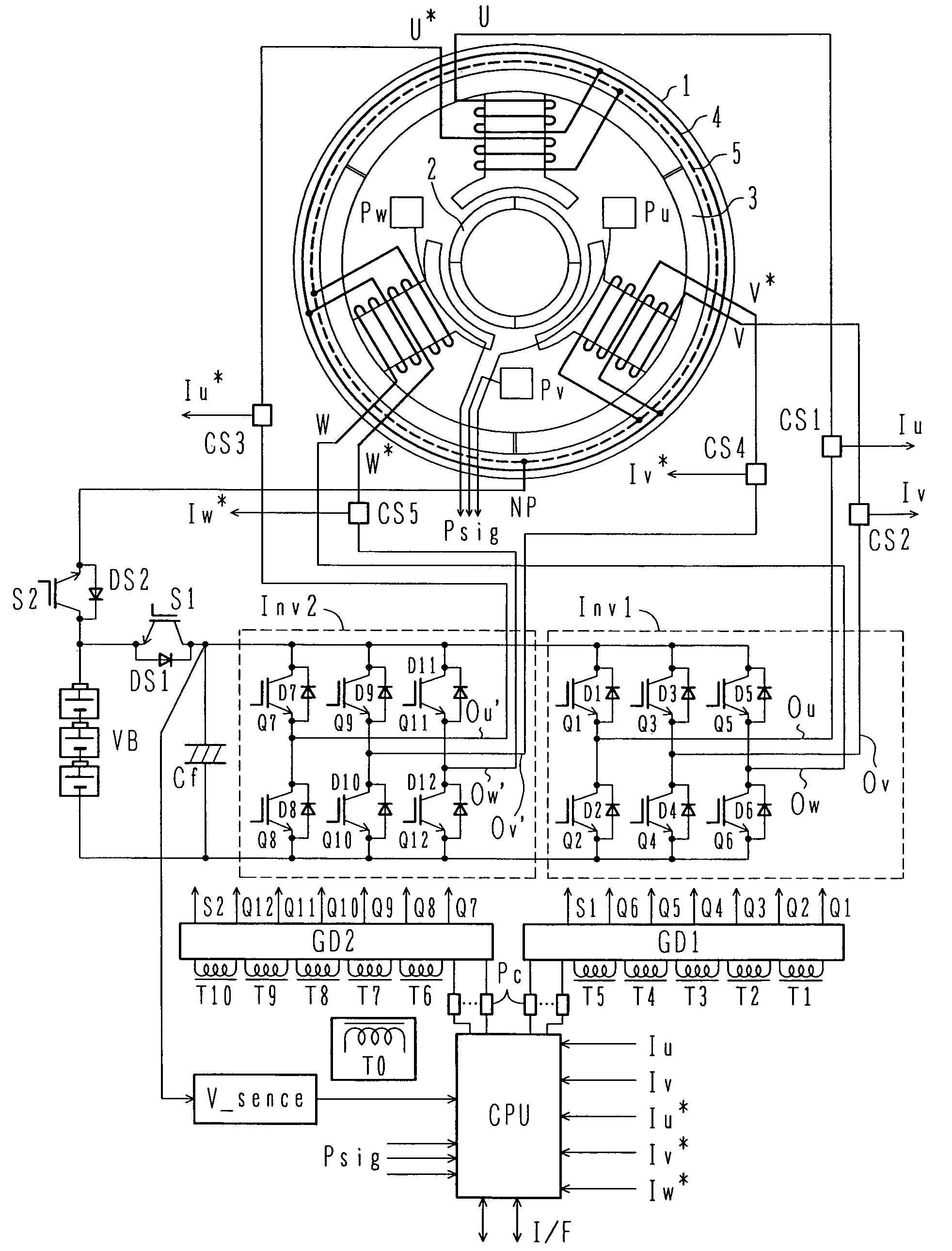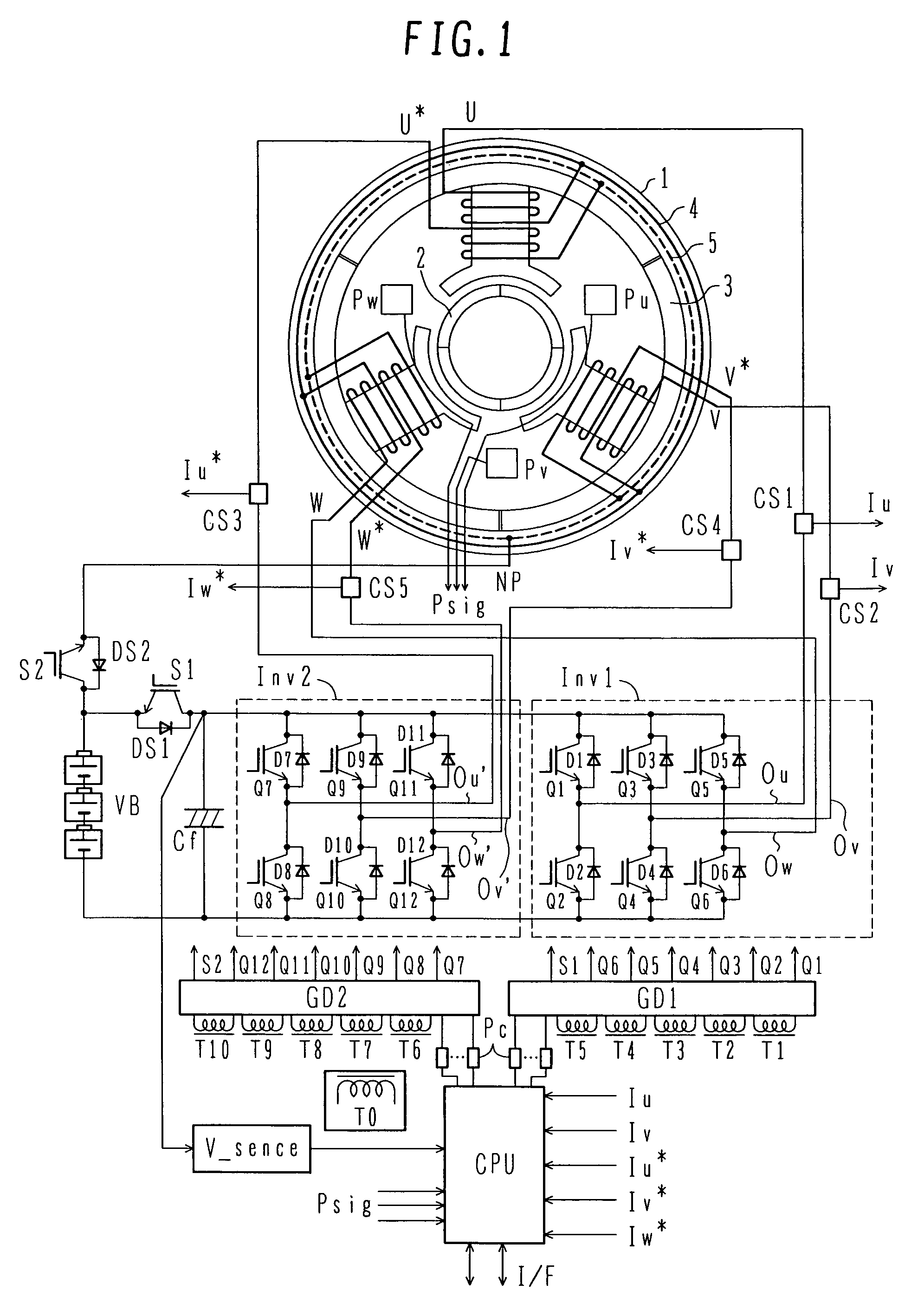Motor driving device and automobile using the same
a technology of driving device and motor, which is applied in the direction of motor control for motor oscillation damping, electric pulse generator, electric device, etc., can solve the problems of power device, whether the motor can be held within a thermally allowable level, and the first known example is not suitable for the case, so as to reduce the loss of the first inverter. , the effect of reducing the loss
- Summary
- Abstract
- Description
- Claims
- Application Information
AI Technical Summary
Benefits of technology
Problems solved by technology
Method used
Image
Examples
Embodiment Construction
[0040]The construction and operation of a double-winding motor driving device according to one embodiment of the present invention will be described below with reference to FIGS. 1-13.
[0041]The construction of the double-winding motor driving device according to the one embodiment of the present invention is first described with reference to FIG. 1.
[0042]FIG. 1 is a circuit diagram showing the overall construction of the double-winding motor driving device according to the one embodiment of the present invention.
[0043]A motor 1 is a three-phase permanent-magnet synchronous motor. The motor 1 comprises a rotor 2 including permanent magnets built therein, and a stator 3 made of a magnetic material, e.g., a silicon steel plate. Pairs of double windings U-U*, V-V*, and W-W* are wound respectively over three teeth of the stator 3. While those windings are shown as a concentrated winding structure in the simplified form, the winding structure is not limited to the illustrated one, and oth...
PUM
 Login to View More
Login to View More Abstract
Description
Claims
Application Information
 Login to View More
Login to View More - R&D
- Intellectual Property
- Life Sciences
- Materials
- Tech Scout
- Unparalleled Data Quality
- Higher Quality Content
- 60% Fewer Hallucinations
Browse by: Latest US Patents, China's latest patents, Technical Efficacy Thesaurus, Application Domain, Technology Topic, Popular Technical Reports.
© 2025 PatSnap. All rights reserved.Legal|Privacy policy|Modern Slavery Act Transparency Statement|Sitemap|About US| Contact US: help@patsnap.com



